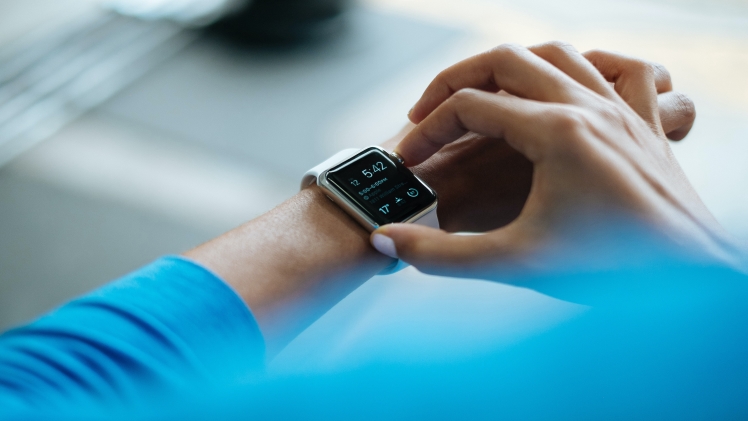The coronavirus pandemic may be waning, but it left an impressionable mark on the economy and consumer habits. From the devastating effects of the ongoing inflation to the worldwide chip shortage, all the way to a changed landscape of the fitness and sports industry.
Look around you and speak with some colleagues about their fitness habits, and you will find that people are much more in tune with their bodies than before. Confined in our apartments during the pandemic lockdowns, many of us developed the habit of exercising since there wasn’t much else to do (save for loading ourselves with carbs from sourdough bread).
Around this time we also became aware of just how much we’ve been sitting down at our jobs. And that was costing us quite a lot, health-wise.
So it is no wonder that the wearable tech industry saw a surge. That kind of consumer technology and durables became more in demand, with people searching for multipurpose gadgets that deliver health and fitness insight, boost productivity, and improve sleep.
Brands and retailers are starting to see that sports professionals and amateur fitness enthusiasts keep buying improved wearable tech. So if you want to get in on this, and develop your own wearable product, do keep reading.
Most Common Features of Wearable Technology for Fitness and Sports

Wearable tech describes intelligent electronic devices that are worn on the body. These multipurpose gadgets track progress in various ways and help us gain insight into our body (and mind!). Most often, the devices are connected to other devices, for an easier view of the results and data. For example, your fitness band is connected by Bluetooth to your smartphone, allowing the proprietary app on your phone to display data gathered by the fitness band.
If you are picturing an innovative fitness product, it’s useful to know which are the most common features found among wearable technology.
Step Counter
When you engage in daily walking exercises, wearable tech can keep track of your steps. Such gadgets measure how far you’ve journeyed using accelerometers and altimeters. That could be regarded as a crucial feature, particularly for hikers and athletes, but for people who sit around a lot and would like to get their recommended daily steps in. You’ll be able to track your development by keeping an eye on the steps you took.
Heart and Respiratory Rate Monitor

Heart monitors used to measure heart rates are a feature of wearable tech. You can get a heart rate reading by placing biosensors on your skin. Biosensors have even been proven to predict impending heart attacks and offer early detection of any heart rate irregularities.
Your breathing can be monitored by wearable tech, as well. That enables you to detect any irregularities in your respiration rate and determine if a workout break is necessary.
Calorie Counter
You use this option to find out how many calories you’ve burned while walking. You can keep records of the calories you take in each day, too. You’ll be able to identify any dietary worries you may have and keep track of which days of the week were the healthiest by being able to track your calorie consumption.
Wearable Tech Preventing Injuries?
All types of sports organizations are rapidly discovering how wearable sports tech can boost efficiency, but also protect players from injury. Given the benefits that teams and athletes have experienced thanks to these devices, it is probable that it will one day become the norm for all players.
The introduction and ongoing progress of producing wearable technology may give clinicians access to data that wasn’t previously available. In comparison to earlier clinical measurements, wearable technology can provide more accurate measurements of motion, force, or pressure. By leveraging these cutting-edge methods in both clinical and non-clinical setups, healthcare professionals may be able to find out novel information.
Much of the available data thus far gathered from wearable tech focuses on descriptive studies of normative data sets of healthy individuals and athletes, suggesting great potential for using this technology to inform clinical decision-making.
Product Development Potential in the Wearable Industry
According to Mordor Intelligence, the compound annual growth rate (CAGR) of wearable technology is expected to be 9.82% for the period of 2021-2026.
A trend of businesses focusing on service enhancement was also noted in the mentioned industry report. That comes to little surprise, as with today’s tech-rich private life, people are expecting more updates, futuristic enhancements, and AI-powered technology.
Even with the ongoing chip shortage worldwide, there is some light at the end of the tunnel. Reuters just reported on the easing of this shortage crisis. So if that was one of the things holding you back from throwing yourself into designing and developing a wearable technology product, you can breathe a bit easier… and maybe start devising that product dev plan? If you are feeling iffy about it and unsure where to start, bear in mind that there are people out there whose actual job is to guide you through the product dev process.
Find a reputable product development consultancy with a good track record, and you’re set to tackle those first steps of a production cycle.
Final Word
The future of fitness and sport is smart – no doubt about it. Fighting the advent of tech-powered sports efforts is futile. Okay, yes – we adopted a bit of a Terminator tone there for a moment. We couldn’t help it, sorry. But that’s because we’re aware of just how much into overdrive people can go when panicking about the value of fitness and sport being lost when using monitoring aids.
The truth lies in the fact that technology is here to serve us. And if you can be part of the innovative force bringing such serviceable goods to consumers, there aren’t many reasons why you should stay unnoticed by fitness and health enthusiasts. So get down to thinking and ideation with your team today!

